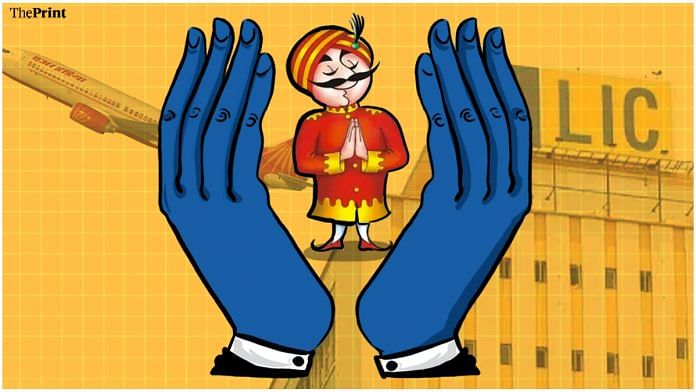Consider two recent sales by the government — of Air India wholesale to the Tata group, and shares in Life Insurance Corporation (LIC) to retail investors.
LIC’s offer price was at a fraction of the metrics at which private sector rivals are valued (typically, in relation to what is called embedded value). Yet its share has fallen since listing — a history that has bedevilled government companies before, like Coal India.
In contrast to LIC, which remains 96.5 per cent owned by the government, Air India has been fully privatised. An earlier offer to sell while the government continued to own some shares found no takers. Even with all the shares on offer, the sale happened only because the government more or less wrote off about Rs 50,000 crore. Most people now expect the airline to perform better.
This dichotomy is not new. Privatised companies (chiefly the ones sold by Arun Shourie when he was in the Vajpayee government — zinc and copper producers, for instance) have tended to do better, post-sale, than most of the companies that have continued to be run by the government, with private shareholders in a minority. Many such “disinvested” companies are quoted at half or a third of their peak values, though the stock market indices are barely 10 per cent below their peak. The story does not change even when the government has put out trillions as fresh capital in state-owned banks, or indirectly through massive write-offs in the twin telecom disasters BSNL and MTNL.
Also Read: Why didn’t RBI raise key interest rate much earlier despite rising inflation? Here’s a theory
The logic of “disinvestment” (as different from privatisation) was that pressure from private investors, even if in a minority, would force state-owned companies to perform better and the government to stay at arm’s length. The assumption was that public sector managers would do better if they were left alone, free from government interference.
That logic has worked in some instances, not in others. Defence undertakings like Hindustan Aeronautics and Bharat Electronics have enjoyed a measure of operational freedom, and their share prices are at peak levels. But these are quasi-monopolies. In a competitive situation, Larsen and Toubro’s shipyard has shown that it can deliver ships within cost and time schedule, something that Mazagon Dock Shipbuilders, another defence undertaking, has never done.
The fact is that the room for decision-making in a public sector entity is constricted — which is why LIC and the public sector banks keep losing ground to private competitors. Besides, the proposition that the problem is the government, not public sector managers, negates the argument for listing government companies since many of them have continued to be subject to official whim. This therefore becomes an argument for outright privatisation — as with Air India, which was destroyed by ministerial interference.
Defenders of the public sector will point out that private sector failures are as common as public sector ones. After all, most private banks that got licences (Global Trust, Centurion, etc) have ceased to exist, while others have been consumed by scandal (YES Bank). Ditto with most telecom licensees and private airlines. Admittedly so, but the point about competition is that losers should fall by the wayside, whereas with government companies the tendency is to pour more taxpayer money into losers’ pockets.
The real argument against privatisation in India’s context is that any sale of a large company is likely to fall into the lap of one of India’s oligarchs. No one sensible would want them to become more powerful than they already are. That is why the model that has worked in India is the privatisation of markets (aviation, telecom, banking, insurance) rather than of companies in those markets. But that still leaves the problem of dealing with the public sector losers in competitive markets.
If one were to adopt the Air India solution, one would wait for the company to be widely seen as having become bankrupt, then give it away for free — if anyone will have it. Or one could extend the bankruptcy process to government companies and sell in an open auction, even if it be to an oligarch who has frightened away other bidders (since transparent processes in India have a way of becoming non-transparent!).
By special arrangement with Business Standard
Also Read: Indian economy looks like a champ while the world struggles. But wait, don’t celebrate yet



